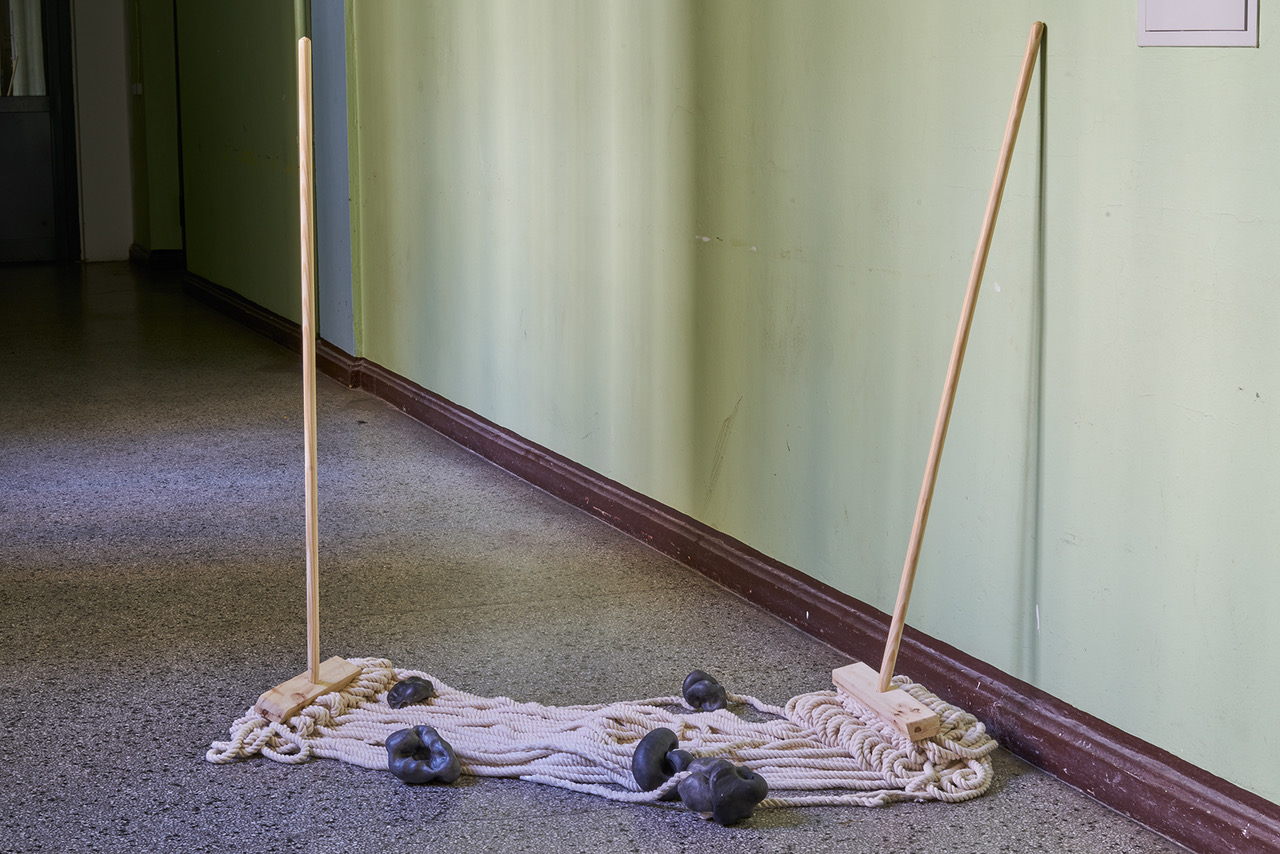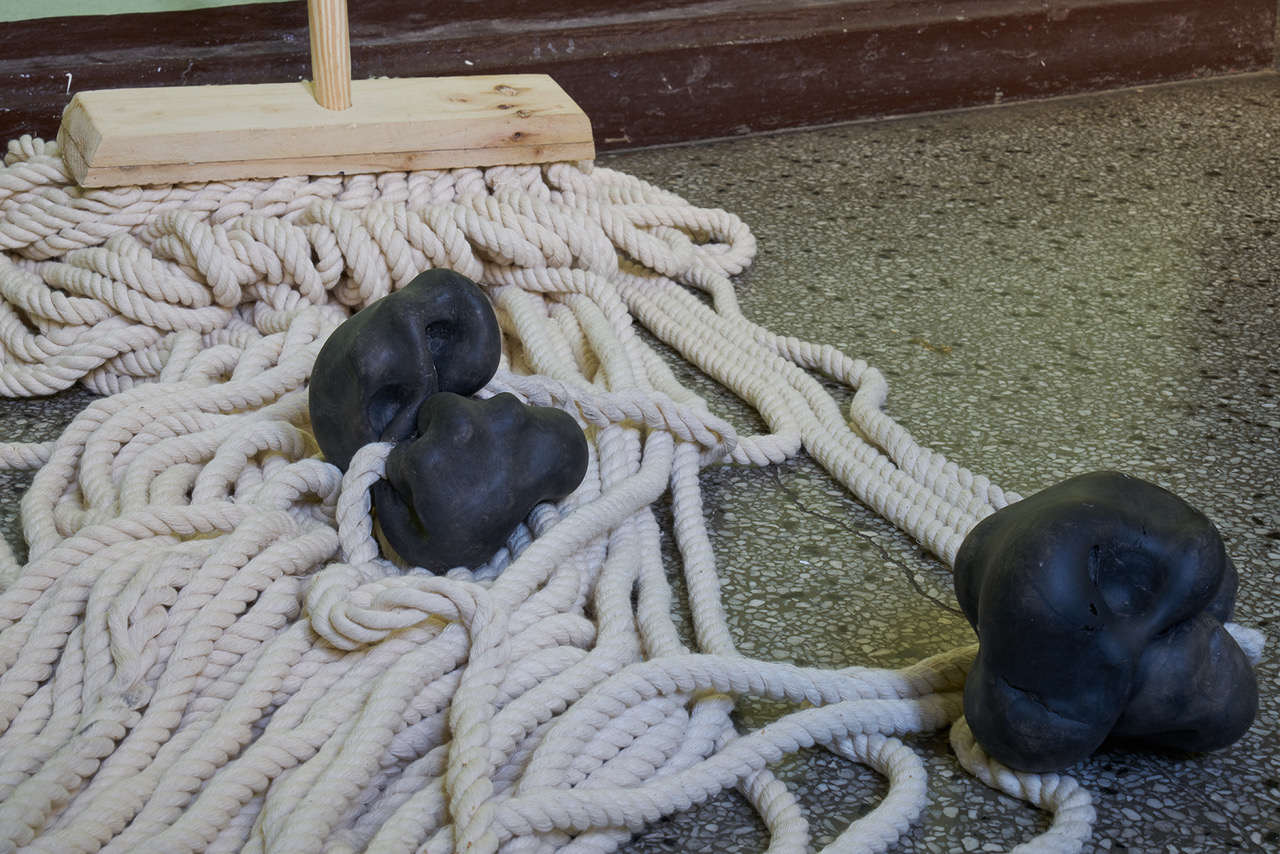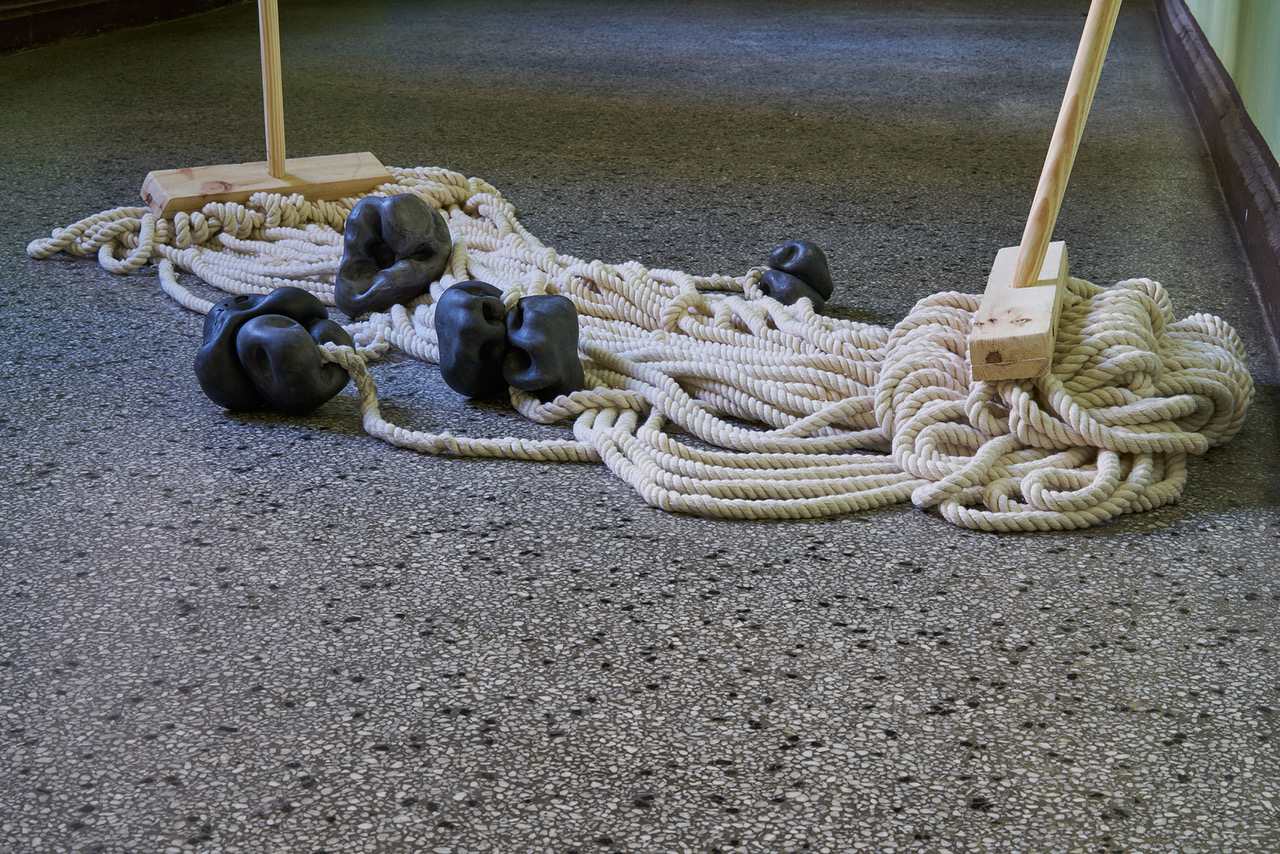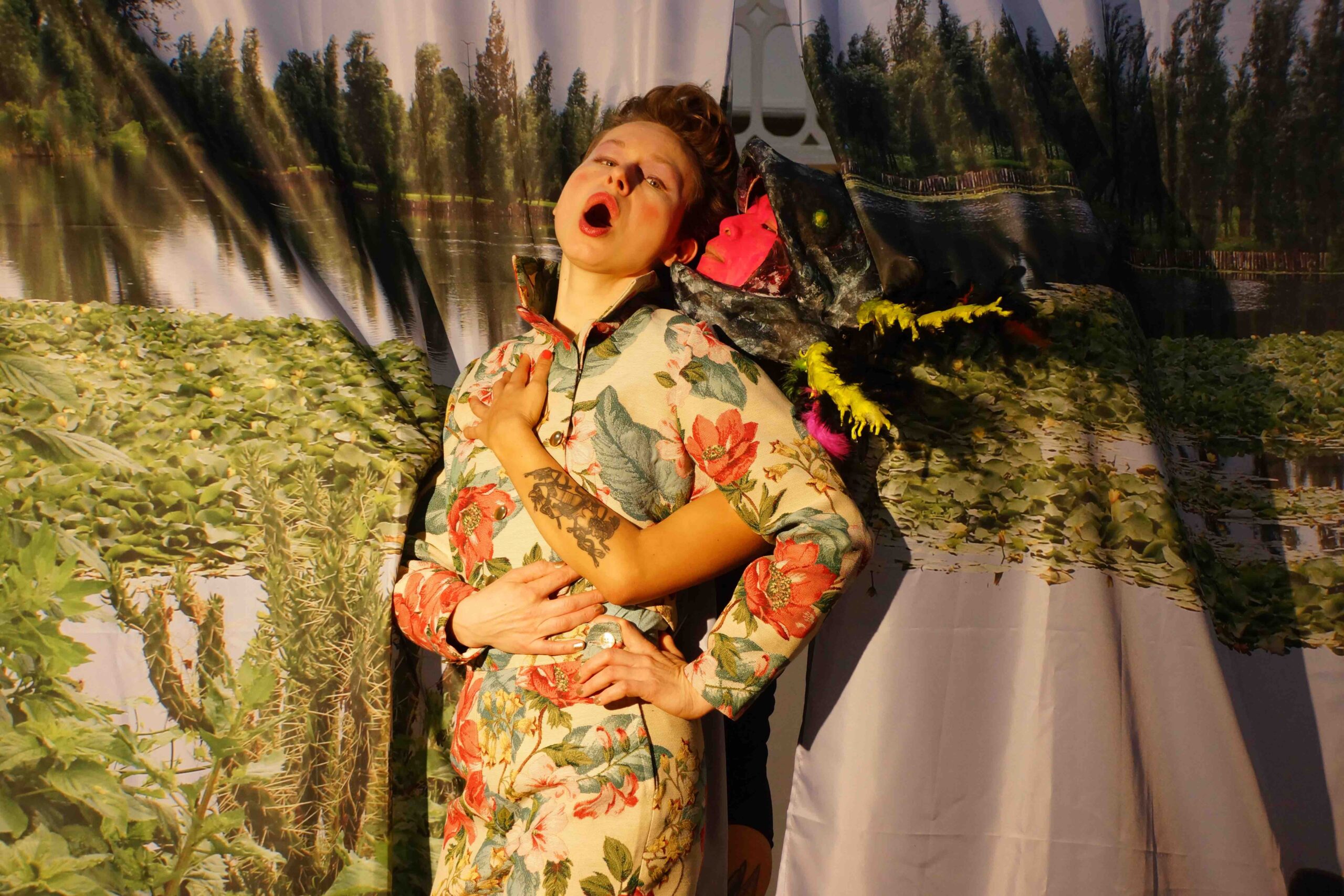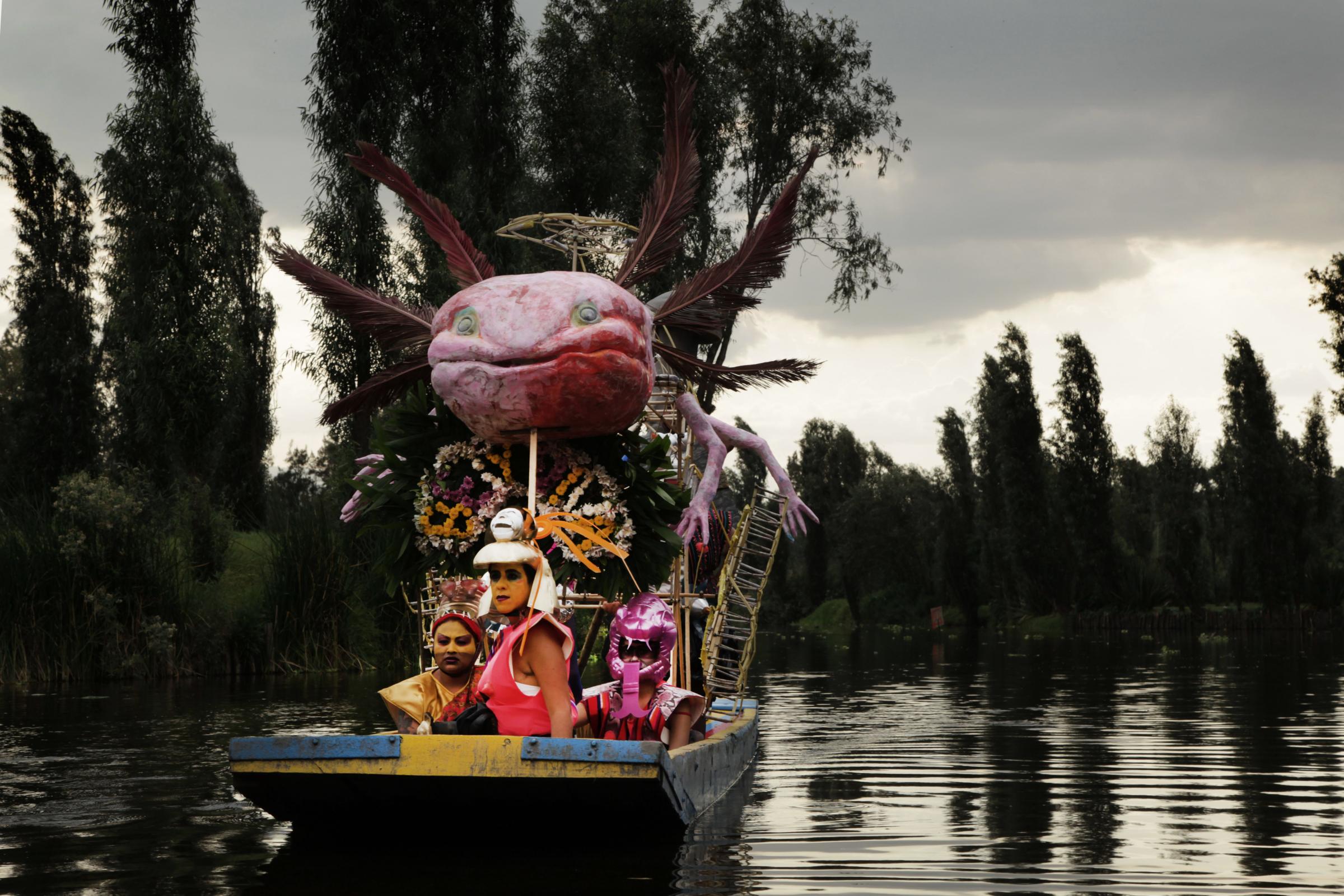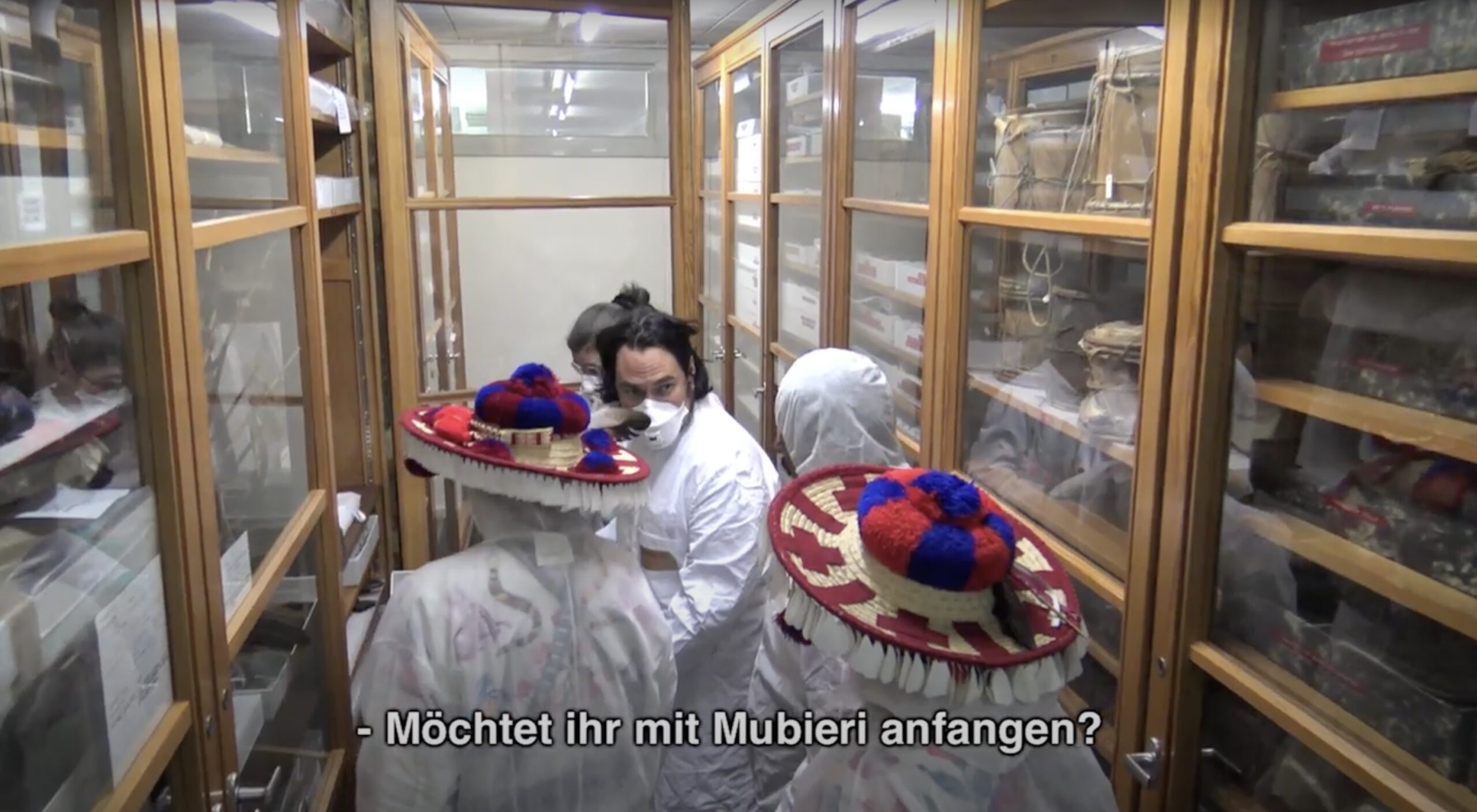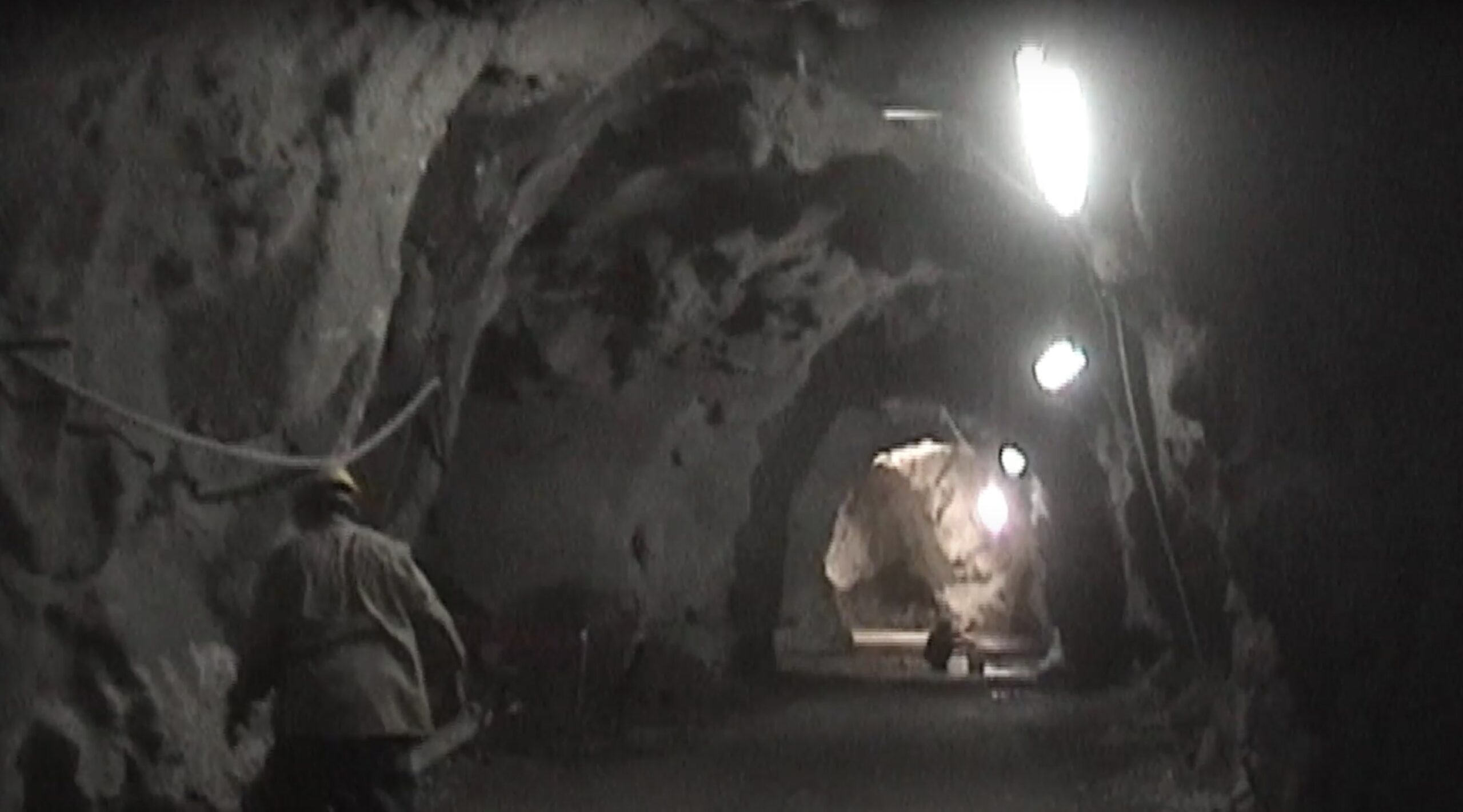In weiter Ferne, so Nah! / Far Away, So Close:
Mexico in Berlin
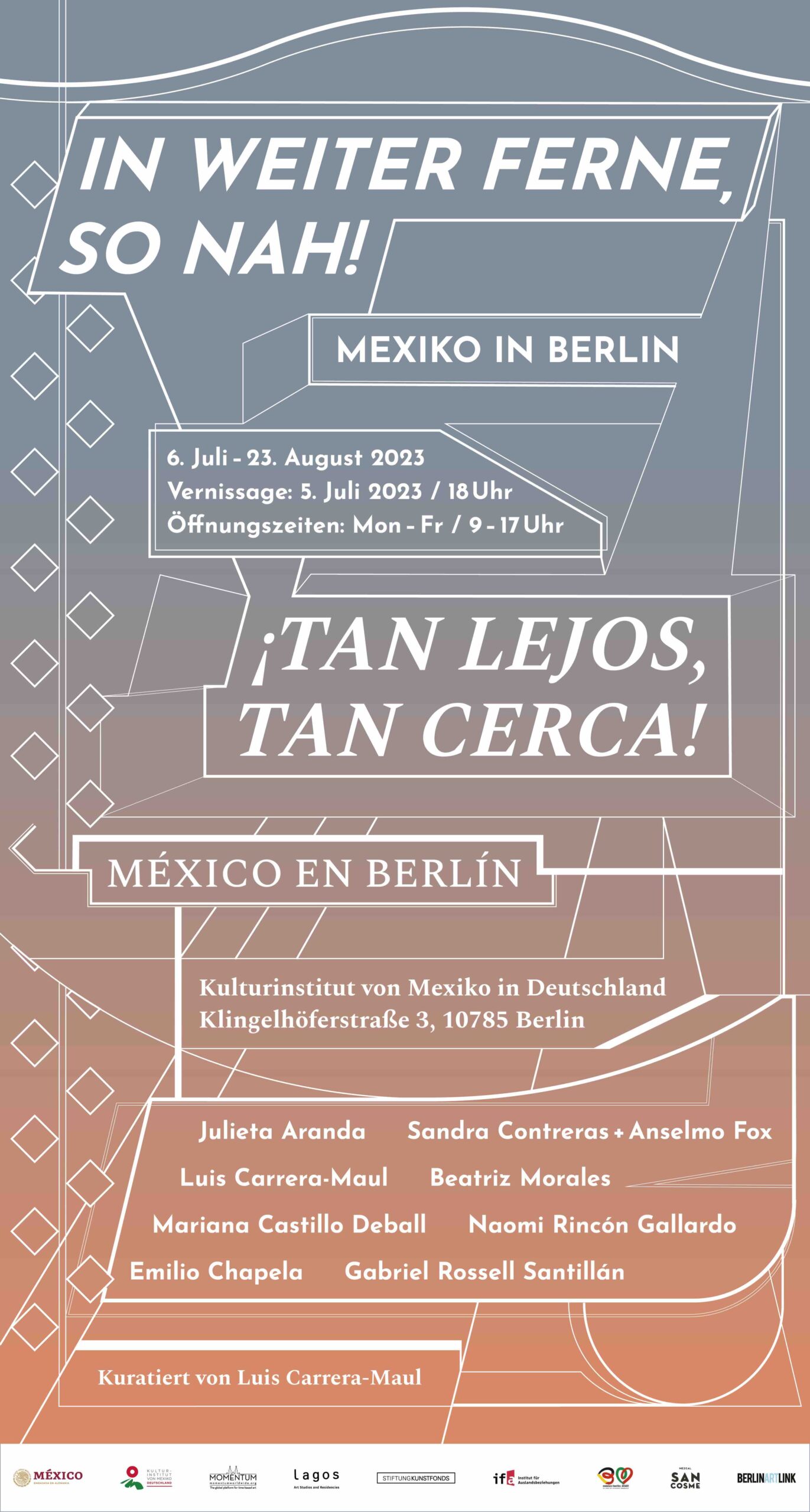
Featuring:
Julieta Aranda, Luis Carrera-Maul, Mariana Castillo Deball, Emilio Chapela, Sandra Contreras & Anselmo Fox, Beatriz Morales, Naomi Rincón Gallardo, Gabriel Rossell Santillán
Curated by Luis Carrera-Maul
Within the framework of the 30th anniversary of sisterhood between Berlin and Mexico City,
MOMENTUM & LAGOS jointly present:
In weiter Ferne, so Nah! / Far Away, So Close
An exhibition of contemporary art by Mexican artists working in Berlin.
OPENING: 5 July @ 6-9pm
With DJ Set by Pato Watson & Mezcal by San Cosme
FINISSAGE: 23 July @ 5-8pm
With Catalogue Launch & Mezcal by San Cosme
Catalogue Design by Emilio Rapanà
EXHIBITION: 6 July – 23 August 2023
Opening Hours: Monday – Friday @ 9-5pm
@ The Cultural Institute of Mexico in Germany
Embassy of Mexico
Klingelhöferstraße 3, 10785 Berlin
On the occasion of the 30th anniversary of the sisterhood between the cities of Mexico and Berlin, which is being celebrated throughout 2023, LAGOS-Mexico and MOMENTUM-Berlin in collaboration with the Mexican Cultural Institute in Germany, are honored to present the exhibition “In weiter Ferne, so nah! – Mexiko in Berlin”, featuring the work of artists from Mexico who live and work in the city of Berlin.
The exhibition includes the work of eight artists who share a common generation and who, as residents of Germany, draw on their Mexican roots in their practice. They integrate the ancestral cultures of Mexico into their artistic discourses, creating through their work a conceptual bridge that unites tradition with contemporary language. The proposals stimulate a series of conversations about the relationship between Mexico and Germany, as well as a dialogue between the native cultures of Mexico and contemporary artistic production in Berlin.
All of the selected artists work in a transdisciplinary way, focusing on installations. The works that make up this exhibition establish a series of timeless and complex relationships. They dialogue with each other through conceptual themes such as the critique of modernity and progress, decolonialism, the Anthropocene and ancestral cosmogonies. The complexity of the artist’s approaches is complemented by a view on Berlin and its own cultural hybridization. The exhibition shows ancestral images re-signified in contemporaneity, historical, mythical and mystical characters in a timeless and continuous dialogue, sacred places in the process of extinction, visions of an altered past and an uncertain future. Objects and sounds deconstructed and returned to their place of origin. Resistance and negotiation.
The exhibition takes its title from Wim Wenders’ 1993 film of the same name, bearing in mind that it was also made 30 years ago, and refers to the apparent spatial distance between the two cities, but at the same time to the mutual recognition of the similarities that exist between them. The argument of Wenders’ film is time and territory, as well as his reflection on individual and cultural identity. The dialectic between time/territory of the human vs. time/territory of the divine, which may suggest a line of interpretation of the selected works.
Finally, this exhibition is an invitation to intercultural dialogue, shows the complexity, diversity and potential of eight artists from Mexico in Berlin, highlights their uniqueness and recognizes the strength of their artistic discourse.
– Luis Carrera-Maul, Curator
Credits:
Curator: Luis Carrera-Maul
Curatorial Assistant: Fernanda Pizá Aragón
Producer: Rachel Rits-Volloch
Graphic Design: Emilio Rapanà
Documentation and Social Media: Alex Rich, Dodi Shepard
Co-Production: LAGOS-México & MOMENTUM-Berlin
[Click on the name of each artist to see the bio and the work description below.]
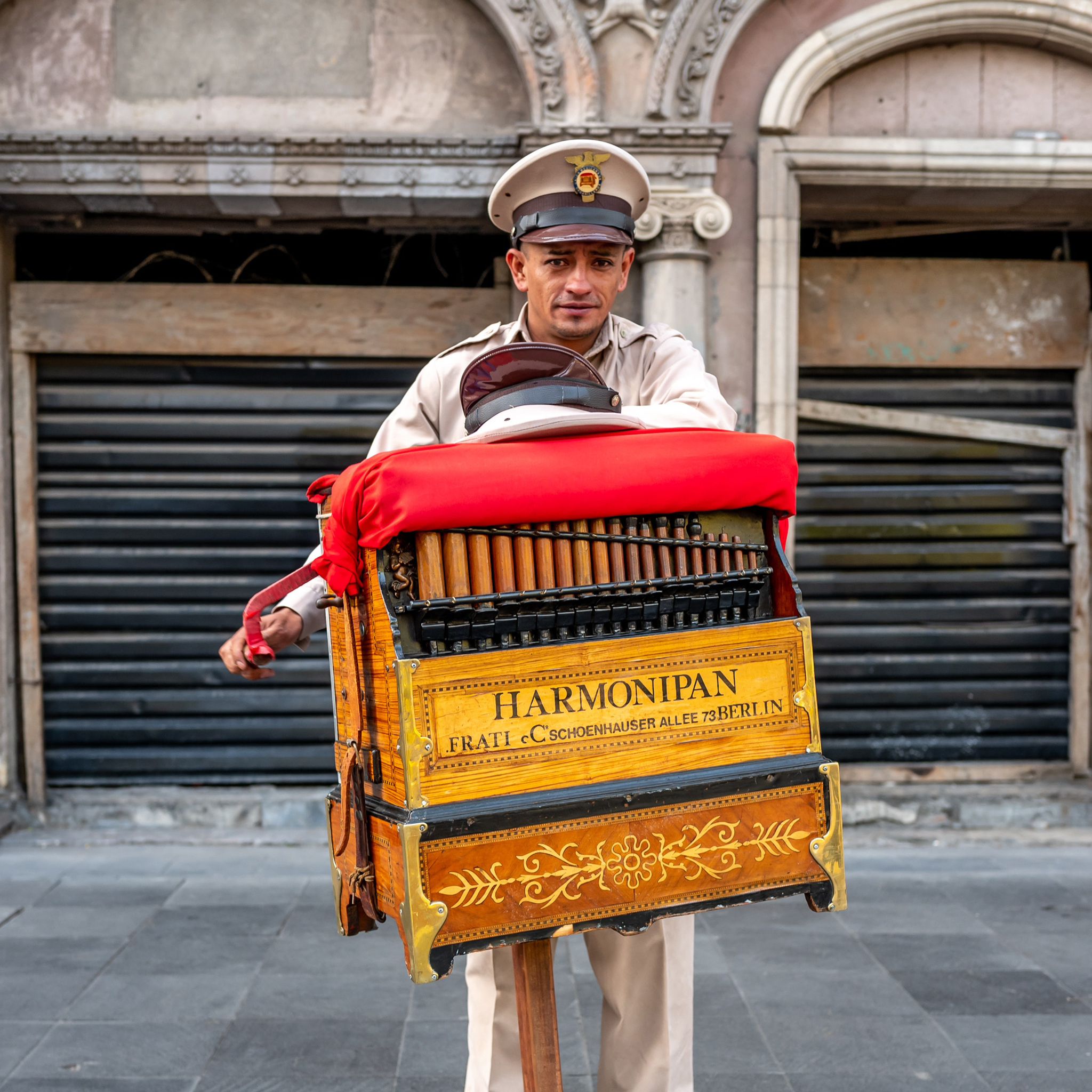 |
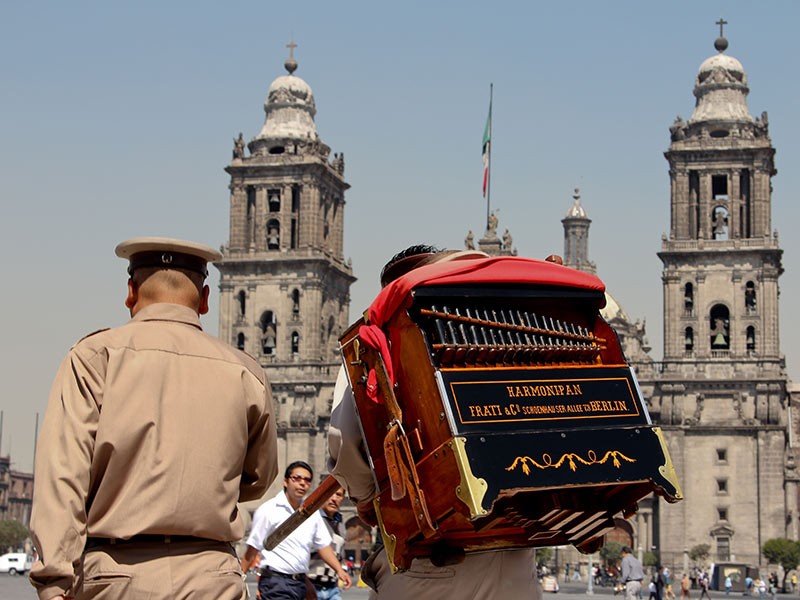
[Photo left by Andrew Hasson Getty Images] |
|
Regresando un Regalo / Returning a Gift (2023) 120 years ago, a gift of 200 musical instruments called harmonipans was gifted to Mexico City by the City of Berlin. The harmonipan is an automatic instrument, similar to player pianos and music boxes, that re-plays popular songs pre-recorded on its punch card-like mechanism, which is enclosed within a lavishly decorated wooden box, bearing inlays of wooden flower motifs. The harmonipans were made by Frati & Co. a company located at Schoenhauser Allee #73, in Berlin, and were a popular instrument for street public performances in Germany at the time. lt must be noted that German players were not musically trained, and operated harmonipans with the same technique used to manoeuvre old-fashioned meat grinders. lt was customary for them to wear a vaguely military-looking uniform. The 200 boxes that arrived in Mexico had a pre-recorded selection of both popular Mexican and German songs of the time – including polkas, waltzes and corridos. Quickly becoming popular, they are now a staple of daily life in the centre of Mexico City, and over the past century became so familiar as to appear as a local custom – today almost no one knows that they are from Germany (despite the fact that they bear the manufacturer’s name and the Berlin address). Mexican harmonipan players also wear a uniform that is something of a mixture between that of a traffic cop and a hotel bell boy. Only one person in the past 60 years knew how to tune these mechanical instruments: señor Alfonso Lazaro García, who sadly passed away in 1965. During the ensuing decades, the instruments went completely out of tune, so much so that the sounds they produce today appear to be totally abstract, and the melodies are barely recognizable, if at all. However the tradition of having these instruments played on the streets is so strong, that most people do not mind the strange noise they hear coming out of these objects and happily give money to the players in reward. Regresando un Regalo (Returning a Gift) consists of bringing one of the harmonipans and its player from Mexico City to Berlin for a period of one week, during which he will play at various public locations, amongst them the address of the former harmonipan factory, and solicit donations just as the harmonipan players do in Mexico. At the exhibition, a music box plays an out-of-tune song from the harmonipan that is visiting Berlin. |
Julieta Aranda (b. 1975 in Mexico City, Mexico. Lives and works in Berlin, Germany and NYC, New York, USA.) In her artistic practice, Julieta Aranda composes sensorial encounters with the nature of time and speculative literature. She observes the altering human-earth relationship through a multidisciplinary lens, looking at science and technology, environmental humanities, multispecies encounters, artificial intelligence, and collective subjectivities. Working with installation, sculpture, video, and print media, she is invested in exploring the potential of temporalities otherwise, and the ‘poetics of circulation’. Her projects challenge the boundaries between subject and object while embracing chance encounters, auto-destruction, and social processes. Julieta Aranda has been awarded numerous grants and merit scholarships, from institutions such as FONCA, the National Foundation for the Culture and the Arts in Mexico (1995–1996), and both the School of Visual Arts (1995–1999), the National Board of Review (1996–1999) and Columbia University (2004) in New York. She has also been an artist in residence at UNIDEE, the International Program by Fondazione Pistoletto in Biella, Italy (2006), as well as at IAPSIS, the International Artists Studio Program in Stockholm (2006) and at the International Residence of Recollets in Paris (2008). Her work has been shown in internationally renowned institutions such as the Museum of Contemporary Art, North Miami (2009); the Solomon R. Guggenheim Museum, New York (2009); the National Museum of Art, Architecture and Design, Oslo (2010); and Museo de Arte Contemporáneo de Castilla y León, Spain (2010), as well as at international art festivals such as the Liverpool Biennial (2010); the Kassel Documenta, Germany (2012); and the Shanghai Biennale (2012). Aranda has been actively collaborating on e-flux since 2003, which is a publishing platform, archive, artist project, curatorial platform, and cultural enterprise founded by Anton Vidokle in 1998. |
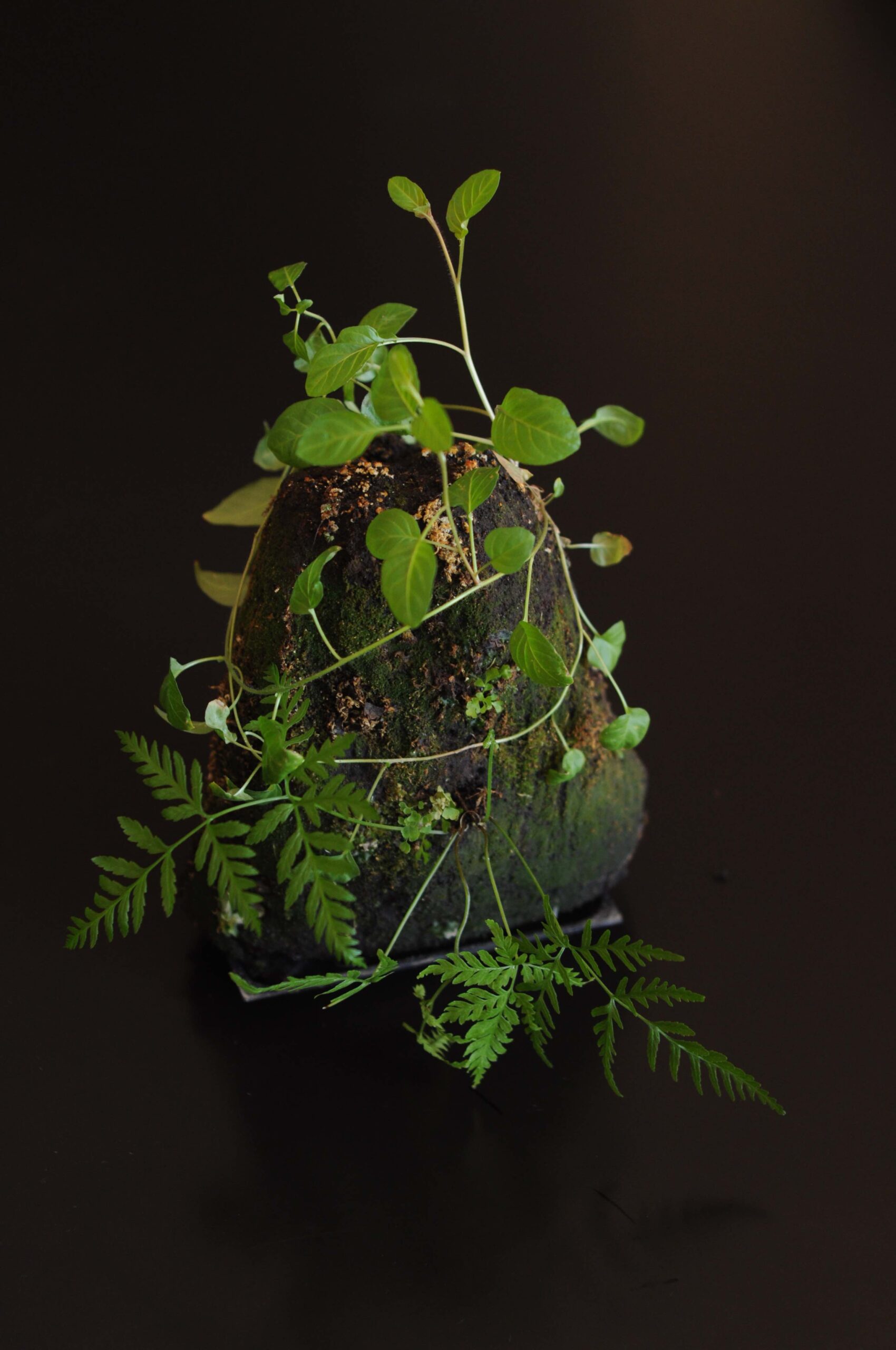
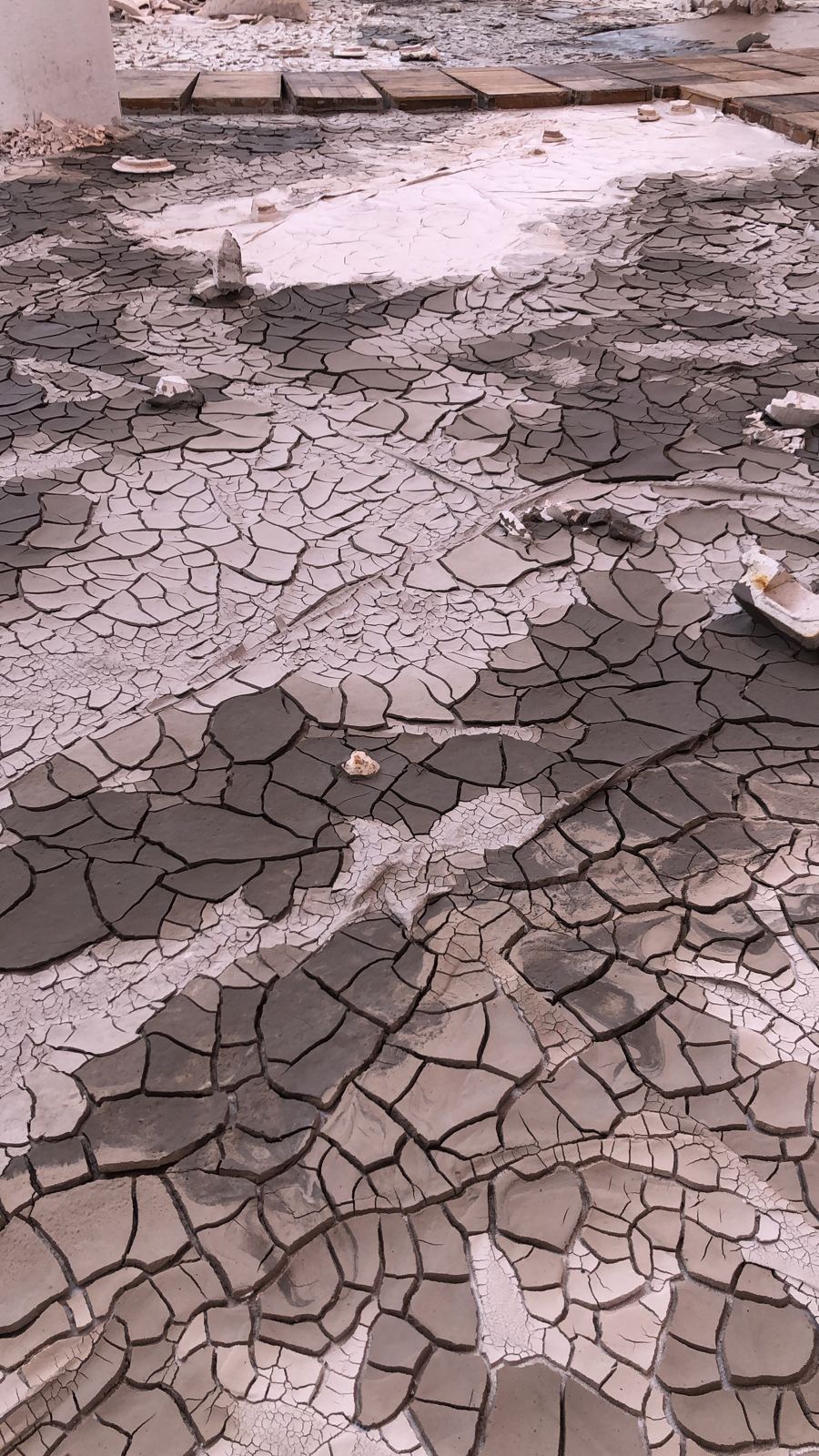
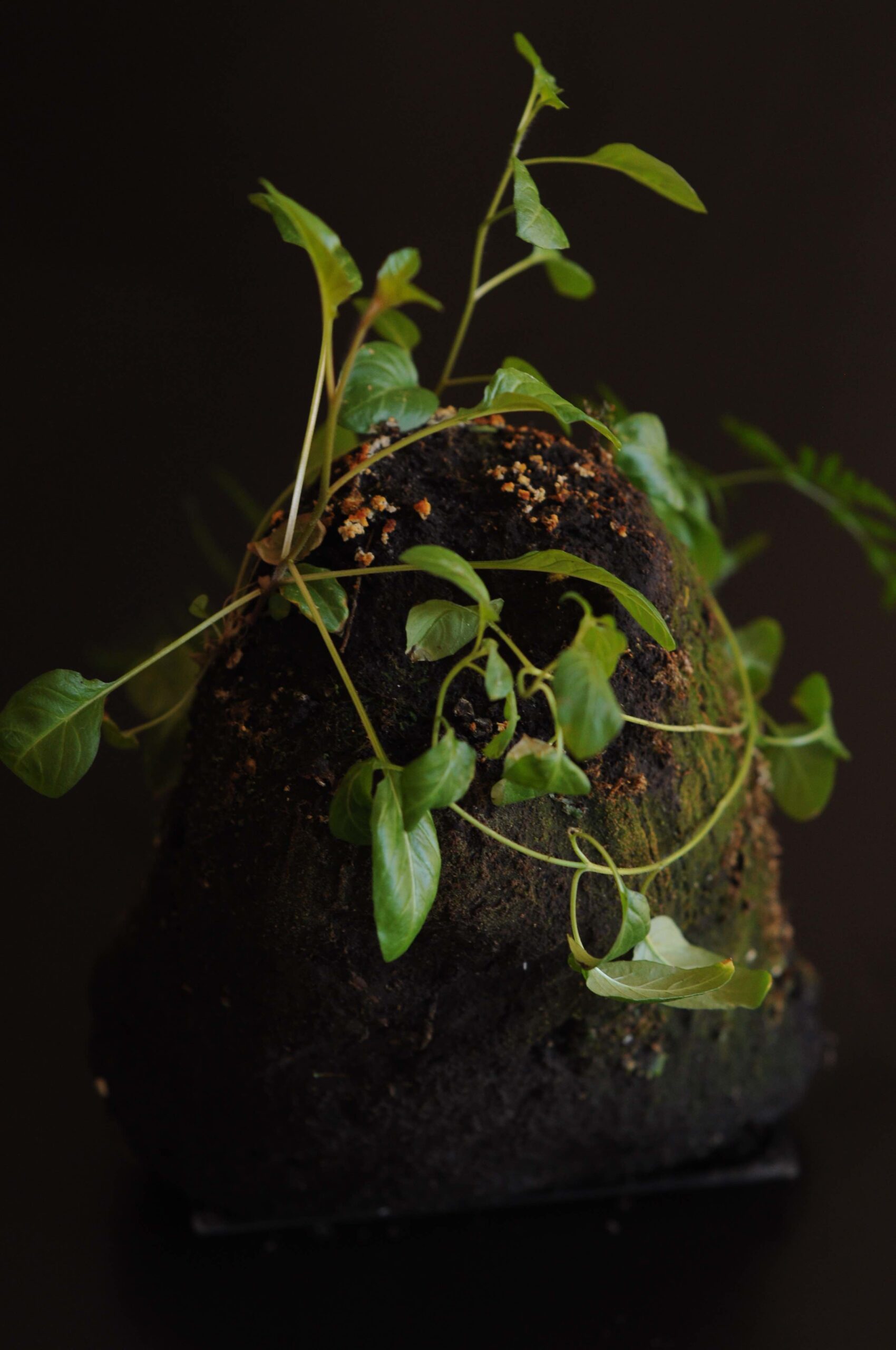
|
STRATUM / Wasteland (2023) Bosque de Chapultepec I & II (2014) Luis Carrera-Maul’s Berlin work continues the geo-aesthetic intervention STRATUM realised in 2022 at the Mexican Museum of Sciences and Arts (MUCA, UNAM); it interprets the configuration and alteration of the Earth’s strata as a fundamental political issue: according to Bruno Latour, all soil interventions are archaic political processes. In the present, marked by climate crisis and species extinction, the critical state of the forests and the aridification of its soils is a central theme that the artist now addresses in his Berlin installation STRATUM / Wasteland. He places 8 objects of compressed and dried soil on an abstracted geological relief map of Germany spread out on the floor of the exhibition hall, always at the location from which he had taken soil samples from various German forests on a tour in 2017. During the exhibition’s runtime, these dried clumps of soil are watered so that they can become the substrate of new plant growth – an experimental arrangement that profiles the artwork as an instrument of ecological research. The autopoiesis of plants, should it actually happen at the exhibition site, becomes a metaphor for the power and vitality of vegetation, even in a possible posthuman future. Thus, in the artistic imagination, the withered wasteland of dying forests is transformed into vital woodscapes. Carrera-Maul’s critical topography of a country plagued by forest dieback and increasing drought produces orientational knowledge for the debates about the Anthropocene. It is an aesthetic soil science that inscribes itself in the “geological turn,” which defines the geological as a subject of the arts and humanities. In this context, the conceptual development and elaboration of an artwork becomes a complementary form of knowledge. STRATUM/Wasteland offers a sensual realisation of the constitution of our living worlds, stimulates reflection on a more responsible approach to planet earth. – Peter Krieger, Dr. phil., curator and research professor |
Luis Carrera-Maul (b. 1972 in Mexico City, Mexico. Lives and works in Berlin, Germany and Mexico City, Mexico.) Luis Carrera-Maul is a visual artist who has followed several lines of research throughout his career, mainly around the Anthropocene and geo-aesthetics. His work establishes a strong dialogue between science and art. In this sense, his projects seek an interdisciplinary connection, taking up concepts from ecology, archeology and geology, among others, as well as themes related to the environment and therefore, to the political. Many of his works are process-oriented and site-specific installations on a large scale, in which he normally uses both traditional techniques and new media. Luis Carrera-Maul is a visual artist, curator, and art professor. He earned his Master’s degree in arts teaching at the Faculty of Arts and Design (FAD) at the National Autonomous University of Mexico (UNAM). Postgraduate studies in Visual Arts at the Autonomous University of Barcelona and the University of the Arts in Berlin (UdK). He is founder and director of the Lagos Project – Studios and Residencies for artists, created as a platform for experimentation and exchange for national and international artists. He has received several awards and recognitions including being Member of the National System of Art Creators (FONCA), the Acquisition Award in 2010 at the II Biennial of Painting Pedro Coronel. Nominated for Best Latin American Visual Artist in the United Kingdom (LUKAS Awards, 2015) and nominated for Prix Thun for Art and Ethics in Switzerland in 2017. In 2018 he was commissioned artist to produce a work for the XIII FEMSA Biennial. He has exhibited both individually and collectively in Mexico, Spain, Argentina, England, Italy and Germany, at institutions such as the Museum of Modern Art (MAM), the National Museum of San Carlos, in Mexico City, Museum of Latin American Art (MALBA) in Buenos Aires Argentina, Barcelona Contemporary Culture Center (CCCB) at Barcelona, Spain, Pedro Coronel Museum and Francisco Goitia Museum both in Zacatecas, the Museum of Oaxacan Painters, Museum of the City in Mérida and the Art Museum of Querétaro, Mexico. |
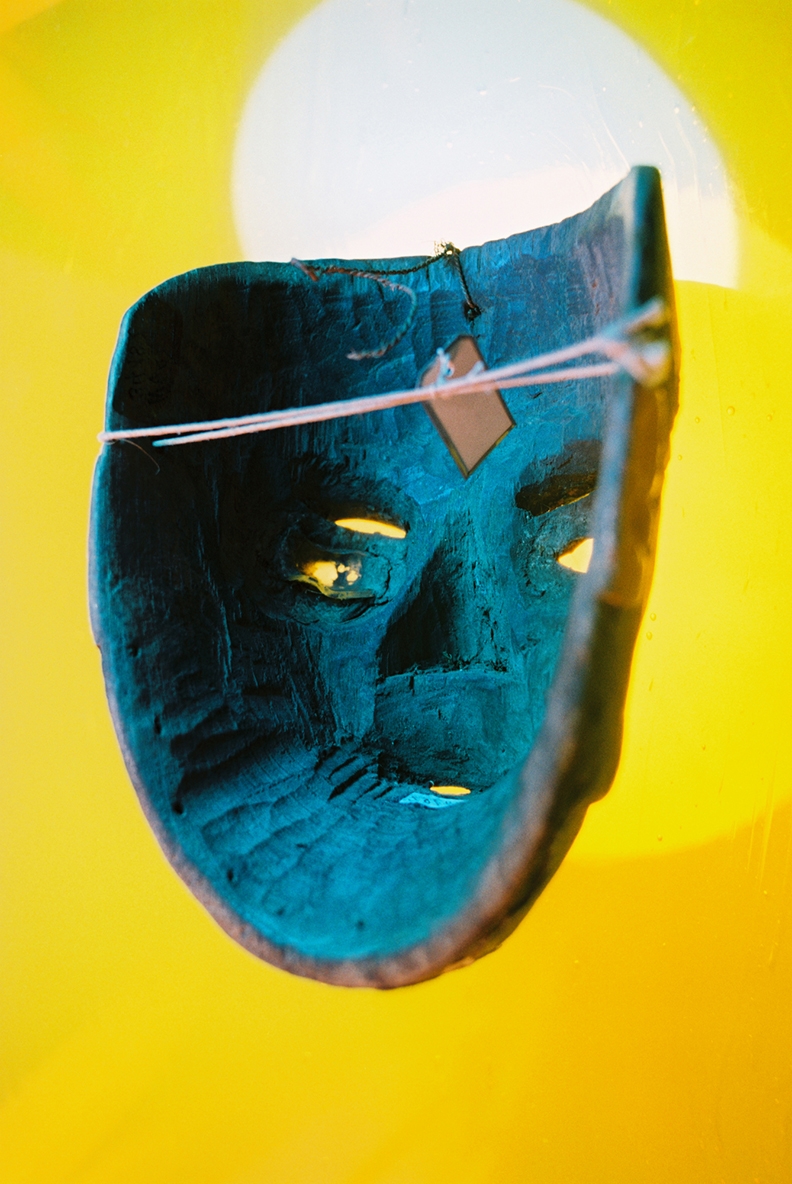
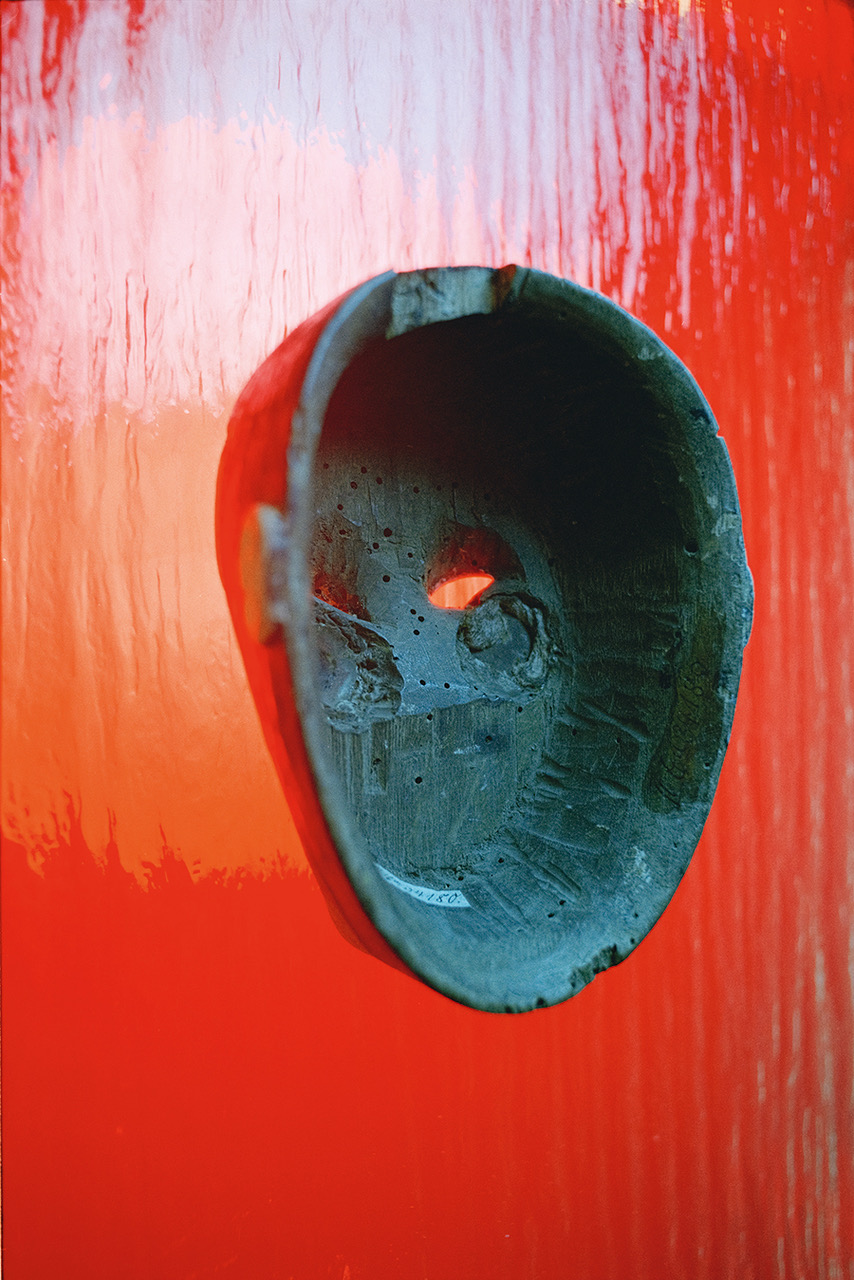
|
UMRISS (2014) |
Mariana Castillo Deball (b. 1975 in Mexico City, Mexico. Lives and works in Berlin, Germany.) |
|
UMRISS is a series of large-format photographic prints based on a Mexican advertisement of the 1980’s promoting Stelazine, an antipsychotic medicine. The flyer used the following slogan: “Schizophrenic patients sometimes hide behind a mask of psychotic withdrawal, which can make them inaccessible to therapy. Stelazine: Remove the mask of the psychotic patient.” This pamphlet was illustrated with images of Mexican masks with extravagant and texturised colour backgrounds, which was in turn a translation of the American advertisement for the same brand. The original version used the African and Canadian equivalents of these masks. Mimicking the style of the promotional campaign, UMRISS uses examples from the Mesoamerican collection of the Ethnographic Museum in Berlin; acquired at the beginning of the twentieth century and originating primarily from the south of Mexico and Guatemala. The photographs only show the backside of the masks, putting an accent on the inventory number from the museum, and the backside and usually invisible part of the object, exhibiting its manufacture, and the side where the face meets the mask when being worn. |
Mariana Castillo Deball is a visual artist whose work has explored the history of cultural objects, their prevalence and the different ways in which these have been interpreted and understood throughout time. Her work’s multidisciplinary focus has driven her to collaborate with professionals of different branches of knowledge on science and culture. Castillo Deball’s installations, performances, sculptures and editorial projects emerge from the recombination of different languages and explore the role of objects in the understanding of our history and identity. Her work is the result of long research processes that allow her to analyse how certain historical objects can be read over time and how they constitute a dialogic version of reality that creates a polyphonic panorama. She takes on the role of the explorer or the archaeologist, compiling found materials in a way that reveals new connections and meanings. Castillo Deball works with ethnographic collections, libraries and historical archives, seeking to go beyond contemporary art institutions and museums. Her artistic production includes several editions: books or objects whose different uses and formats aim to open up new territories. Her raw material arises from the exchange between anthropology, philosophy and literature in a process of mutual learning. Mariana Castillo Deball has been awarded internationally renowned prizes, including the Prize of the National Gallery, Berlin (2013). She has participated in numerous major exhibitions and biennials, including the Sao Paulo Biennial (2016), Berlin Biennale (2014), dOCUMENTA (13), Kassel (2012) or the Venice Biennale (2011). The artist’s most recent solo exhibitions include MGK Siegen (2021), MUAC Mexico city (2022), Modern Art Oxford, England (2020), Museum Monash University Museum of Art, Melbourne and New Museum, New York (both 2019). She has been teaching as a professor of sculpture at Münster Academy of Art since 2015. |
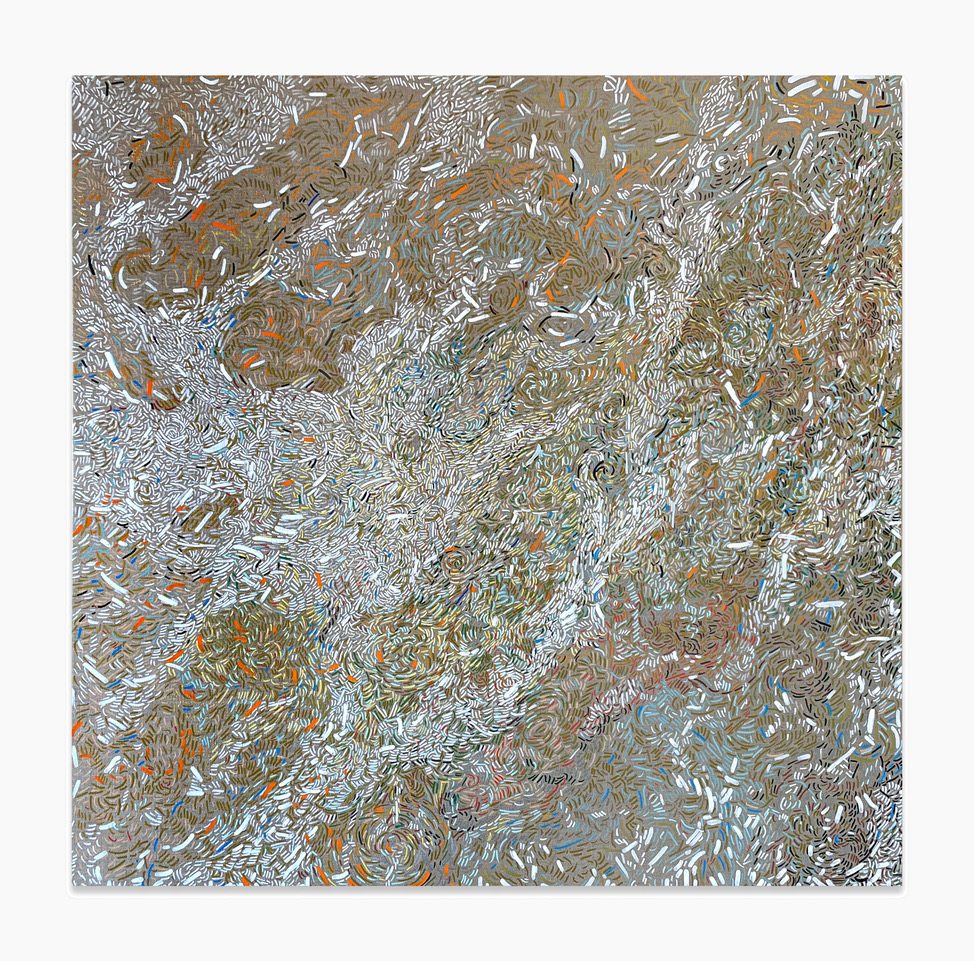
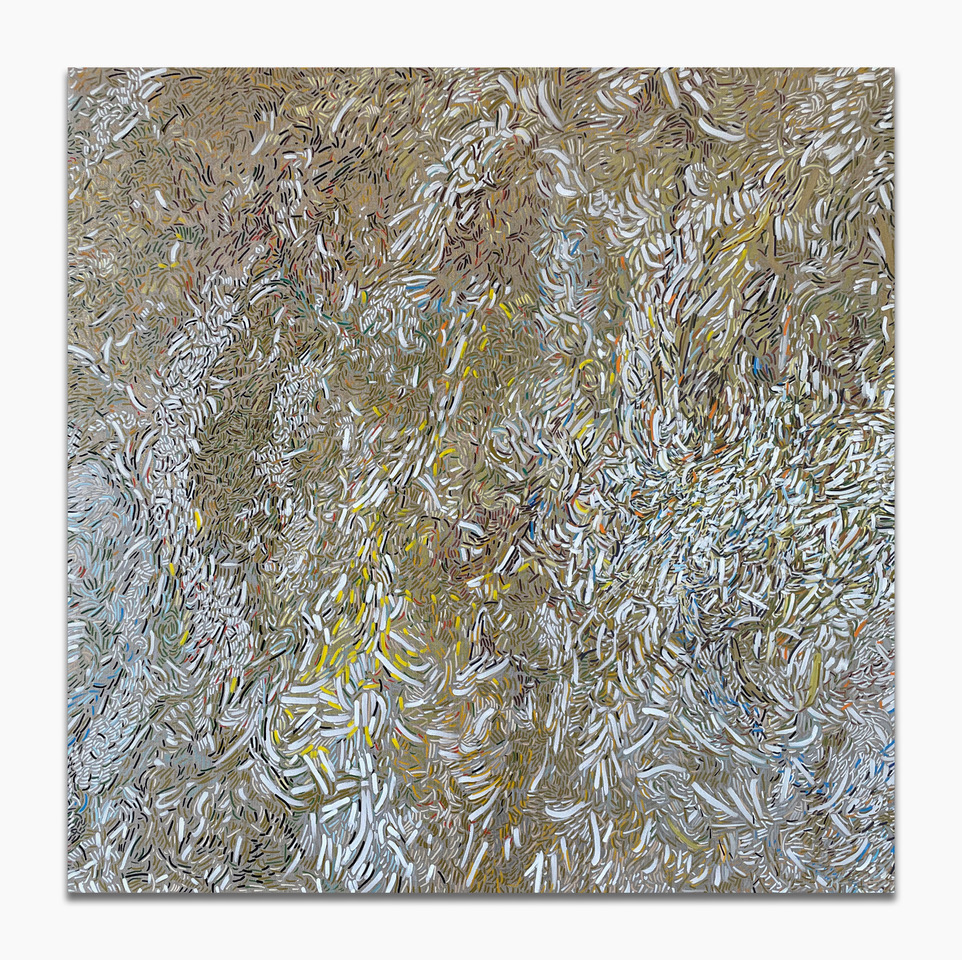
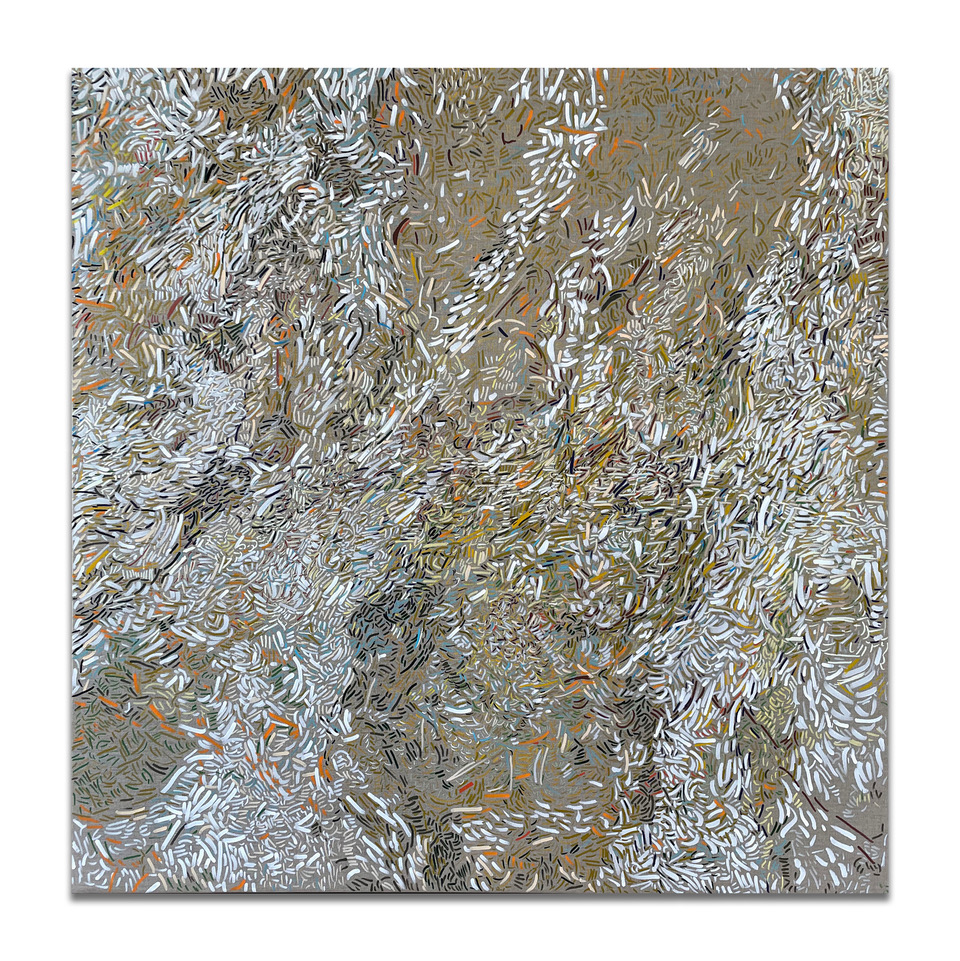
|
Río Revuelto (2023) Rio Revuelto is part of a series of works that consists of paintings and drawings that aim to better understand the varied and complex motions experienced by moving water – as manifested in the form of turbulence, calm water, vortexes, whirlpools, splashes, waterfalls, eddies, waves and tidal movements. Each painting is made by making numerous strokes of paint that fill the canvas with the objective of assimilating the complex movements of water and sediments in a river. This polyptych of six paintings is only a segment of an ongoing image that unfolds from painting to painting describing the flow of a river as it advances forward. There have been consistent efforts to control and domesticate the flow of rivers with the help of infrastructure works like dams, canals and diversions that aim to redirect, reduce floods, or even change the direction of a river flow. While some of these engineering works might be useful, water often finds its way to break through them. It does so by remembering the places where it used to flow or by finding its way out, flooding and changing in shape. By understanding how water moves, it might be possible to learn new forms of resistance to control structures and impositions, like the ones forced on water throughout human history. However chaotic in appearance, when water becomes agitated and turbulent, it is subject to a high degree of spontaneous order: water particles become sensitive to other molecules and their environment, which results in a coordinated response. This is similar to the kind of order seen when a large group of people accommodate without explicitly agreeing to it and walk through a narrow path or tunnel: bodies become tightly packed and move in coordination. Similar forms of spontaneous order are also seen in climatic events, ecological systems and technology systems. The Río Revuelto is a series of works that unfolds as a long (potentially infinite) line of paintings that resembles a river flow and that are always connected to each other. One painting “flows” into the following keeping the same direction, similarly as a river advances by moving forward, as an arrow. Physicists also use the image of the arrow to describe how time moves, from the past to the future in an irreversible motion. ´No one has ever seen a river flow up a mountain´, explains the philosopher Michel Serres, referring to the direction of time as manifested in rivers: The Seine in Paris flows from “memory to hope”, he explains in the Incandescent. Río Revuelto also flows from past to future advancing in time. |
Emilio Chapela (b.1978 in Mexico City, Mexico. Lives and works in Berlin, Germany and Mexico City, Mexico.) Emilio Chapela is a visual artist and researcher. His work is informed by science, technology and ecology and aims to visualise bonds and connections between humans and nonhumans to reconcile with the world’s various temporalities and movements. Chapela inquiries on notions of time and space that are manifested through matter and forces such as astronomical phenomena, light, weather, gravity, rocks, plants, volcanoes, and rivers. He utilises writing, walking, hiking, and stargazing, as tools for his art practice. Emilio Chapela is a fellow at Sistema Nacional de Creadores de Arte (2022-2024) in Mexico. He has exhibited extensively in Mexico, Latinoamerica, the USA and Europe in institutions and museums such as Museum Fine Arts Houston, Fundación Jumex, Phoenix Art Museum, FEMSA, Museo Rufino Tamayo and Museo de Arte Carrillo Gil, amongst others. His most recent solo show En el tiempo de la Rosa no envejece el jardinero was exhibited at Laboratorio Arte Alameda in Mexico City in 2019, where he collaborated with architects, astronomers and scientists. He holds a PhD in artistic research from the University of Plymouth, UK. |
|
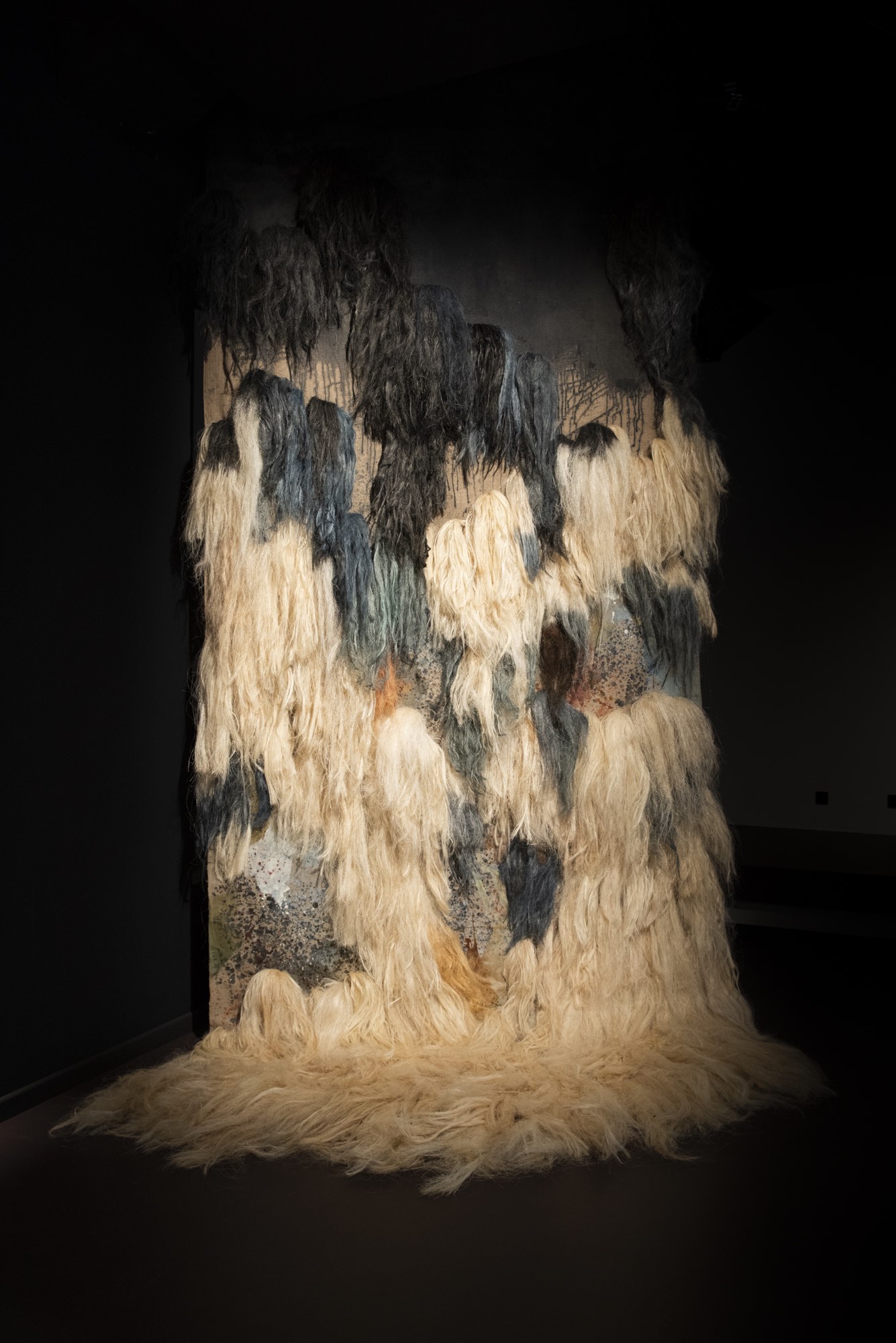

|


 Back to Homepage
Back to Homepage





